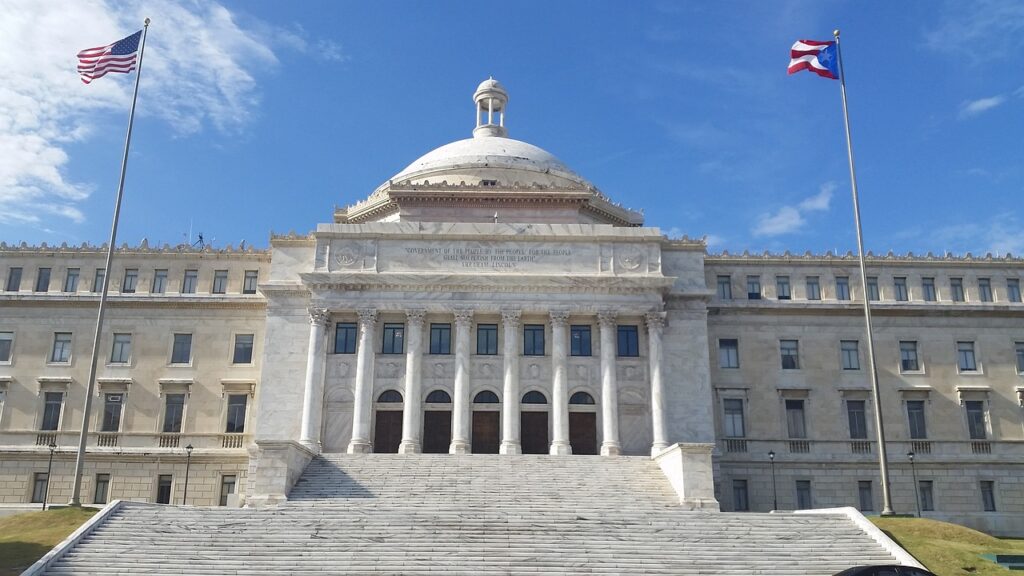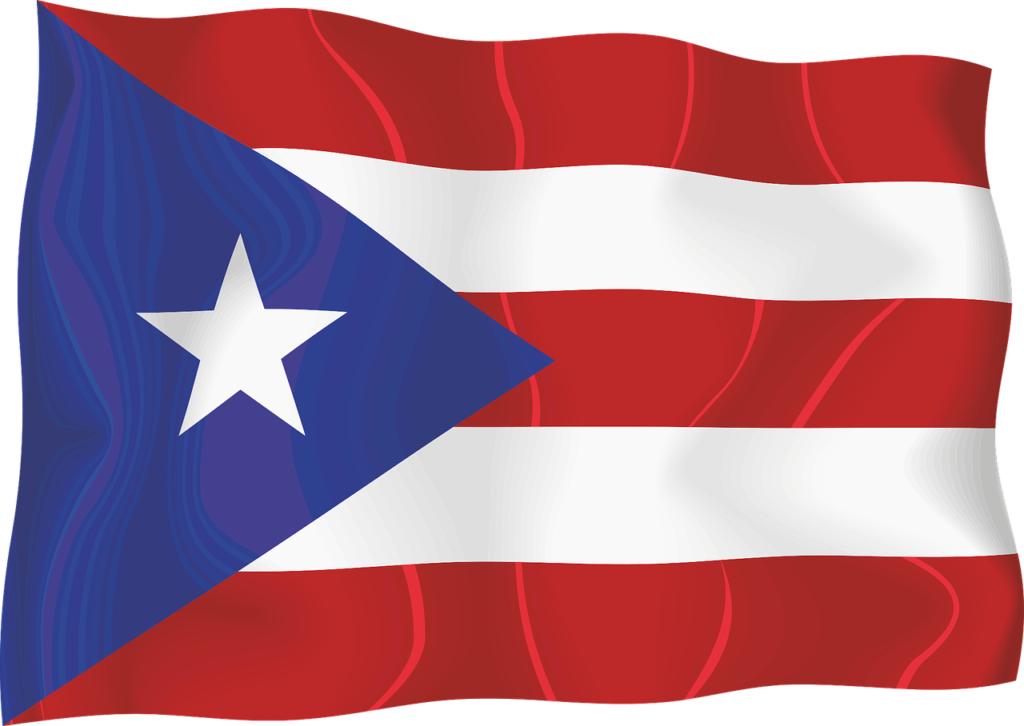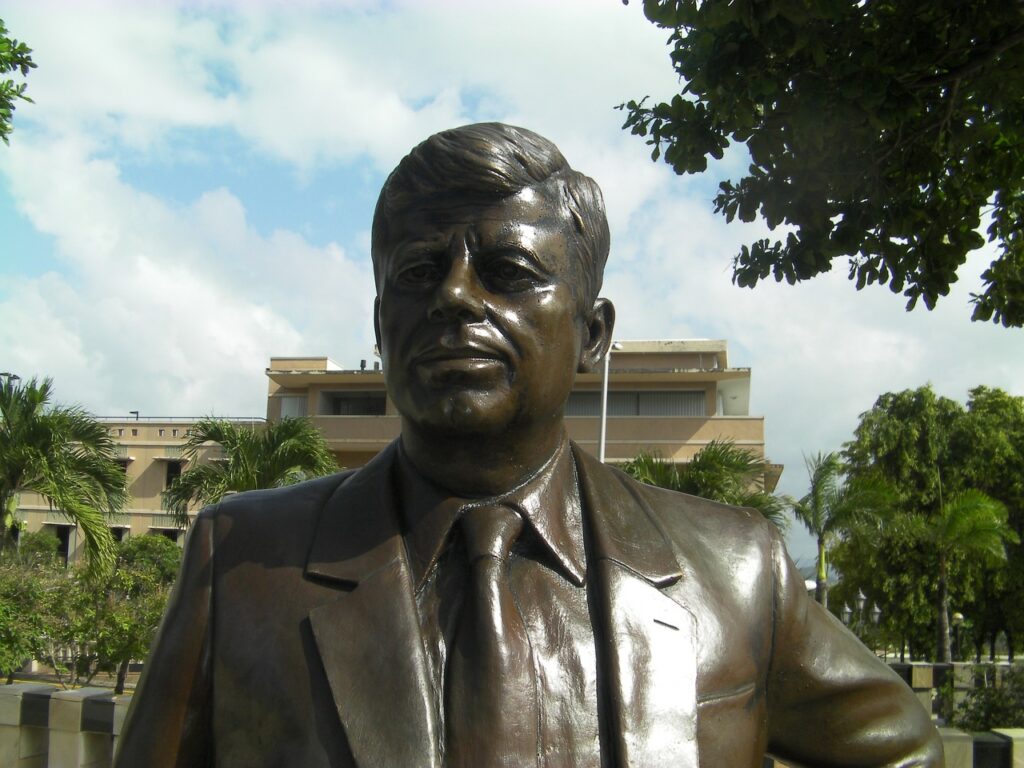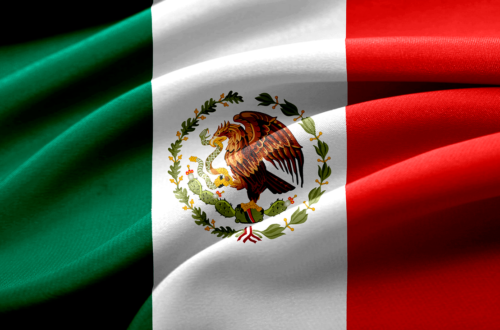
Interesting Facts About Puerto Rico (The Best 44)
Facts About Puerto Rico
Puerto Rico, a Caribbean gem, has long captivated the hearts of travelers and history enthusiasts alike. Known officially as the Commonwealth of Puerto Rico, this unincorporated territory of the United States is a unique blend of history, culture, and natural beauty. In this comprehensive article, we delve deep into the most interesting facts about Puerto Rico, unraveling its mysteries and highlighting why it’s more than just a tropical paradise.
The Rich Historical Tapestry of Puerto Rico
Christopher Columbus and the Island’s Discovery
One of the most significant events in Puerto Rican history was the arrival of Christopher Columbus in 1493, during his second voyage to the New World. Columbus claimed the island for Spain, naming it San Juan Bautista. However, the name Puerto Rico, meaning “rich port city,” later became prevalent due to the island’s wealth in natural resources and strategic location. This marked the beginning of Puerto Rico’s journey as a Spanish colony, a period that left a profound impact on the island’s culture and identity.
The Spanish-American War and its Aftermath
The Spanish-American War in 1898 was a turning point for Puerto Rico. As a result of the Treaty of Paris, which ended the conflict, Puerto Rico was ceded by Spain to the United States. This transition not only altered the political landscape but also paved the way for significant cultural and social changes. The Jones-Shafroth Act of 1917 granted U.S. citizenship to Puerto Ricans, further solidifying the island’s connection to the United States.
Puerto Rico Today: A Melting Pot of Cultures

The Vibrant Capital City: San Juan
San Juan, the capital city of Puerto Rico, is a vibrant blend of the old and the new. Old San Juan, with its cobblestone streets and colorful buildings, is a UNESCO World Heritage Site, housing some of the oldest churches in the Americas. Meanwhile, the newer parts of San Juan showcase modern Puerto Rican life, buzzing with live music, exquisite cuisine, and a lively atmosphere.
Language and Identity: The People of Puerto Rico
Puerto Ricans, while American citizens, maintain a distinct identity. Spanish and English are the official languages of Puerto Rico, reflecting its dual heritage. The island’s rich history is a tapestry woven from the legacies of the Taíno people, Spanish colonizers, African slaves, and other groups that have influenced its cultural landscape. This unique blend is evident in every aspect of Puerto Rican life, from its music and art to its traditions and beliefs.
Facts About Puerto Rico
Puerto Rico’s Natural Wonders

El Yunque National Forest: The Only Tropical Rainforest in the U.S.
El Yunque National Forest stands as a testament to Puerto Rico’s stunning natural beauty. It is the only tropical rainforest in the U.S. National Forest System and offers a diverse ecosystem, home to hundreds of unique plant and animal species. The forest’s highest point, Cerro de Punta, offers breathtaking views and is a must-visit for nature enthusiasts.
Bioluminescent Bays: A Natural Light Show
Puerto Rico is famous for its bioluminescent bays, such as Mosquito Bay and La Parguera. These bays, illuminated by microorganisms, offer a magical experience, especially under the night sky. Kayaking through these glowing waters is an unforgettable experience, showcasing one of Puerto Rico’s most enchanting natural wonders.
Exploring Puerto Rico’s Culture and Traditions

The Birthplace of the Piña Colada
One of the most interesting facts about Puerto Rico is its claim to fame as the birthplace of the world-famous piña colada. This refreshing cocktail, made from rum, coconut cream, and pineapple juice, was allegedly invented in San Juan. Today, it’s not just a drink but a symbol of Puerto Rican hospitality and its tropical climate.
The Influence of the Taino Indians
The Taíno people, the indigenous inhabitants of Puerto Rico, have left an indelible mark on the island’s cultural heritage. From the name Puerto Rico itself to various place names and cultural practices, their influence is pervasive. The Taíno legacy is particularly evident in Puerto Rican art, music, and even in the national dish of Puerto Rico, arroz con gandules.
Facts About Puerto Rico

Puerto Rico’s Geographical Marvels
The Caribbean Island and Its Tropical Marine Climate
Puerto Rico, an enchanting Caribbean island, boasts a tropical marine climate, characterized by warm temperatures year-round. The average temperature hovers around a comfortable 80°F, making it a perfect destination for beach lovers. The island’s location, east of the Dominican Republic and in the North Atlantic Ocean, contributes to its idyllic weather and stunning natural landscapes.
The Island’s Diverse Geography
While many associate Puerto Rico with beautiful beaches, the island offers much more. From the lush El Yunque National Forest to the mysterious caves of the Arecibo Observatory area, Puerto Rico is a land of diverse natural wonders. The highest point, Cerro de Punta, and the lowest point, the Caribbean Sea, illustrate the geographical contrasts that make the island so unique.
The Political and Economic Landscape
Commonwealth Status and Its Implications
As the Commonwealth of Puerto Rico, the island maintains a unique relationship with the United States. This status grants Puerto Ricans U.S. citizenship but limits their participation in presidential elections to only primary votes. They have a Resident Commissioner in Congress but no voting rights, reflecting the complex political relationship between Puerto Rico and the mainland United States.
The Economy: From Agriculture to Modern Industries
Puerto Rico’s economy has evolved significantly over the years. Once primarily agricultural, focusing on sugar cane, coffee, and tobacco, it has diversified into manufacturing and services. The largest rum distillery in the world is located here, symbolizing the island’s rich history in rum production. Additionally, the use of the U.S. dollar as the official currency facilitates trade and economic stability.
Facts About Puerto Rico

The Urban and Architectural Heritage
Old San Juan: A Historical Treasure
Old San Juan, the heart of the capital city, is a living museum. This historic district, with its blue cobblestone streets and colonial architecture, tells the story of Puerto Rico’s past. Landmarks like El Morro and La Fortaleza are not just tourist attractions but symbols of the island’s rich history and resilience.
Modern Development and Infrastructure
Contrasting with the historic charm of Old San Juan, the main island of Puerto Rico and its smaller islands, like Mona Island and Caja de Muertos, showcase modern development. The Arecibo Observatory, for instance, was one of the world’s largest radio telescopes, reflecting Puerto Rico’s contributions to science and technology.
The Culinary Delights of Puerto Rico
A Taste of the Caribbean: Puerto Rican Cuisine
Puerto Rican cuisine is a delicious fusion of Spanish, African, Taíno, and American influences, making it a pivotal aspect of the island’s culture. The national dish, arroz con gandules (rice with pigeon peas), is a savory blend of flavors that embodies the island’s culinary heritage. Street food, like alcapurrias and bacalaítos, offers a taste of local flavors, making Puerto Rico a haven for food enthusiasts.
Coffee and Rum: The Flavors of the Island
Puerto Rico’s rich volcanic soil and tropical climate are ideal for growing coffee, a staple in Puerto Rican households. The island’s coffee is renowned for its rich, bold flavor, a must-try for visitors. Equally famous is Puerto Rican rum, a key ingredient in many local cocktails and a testament to the island’s long history of rum production.
Facts About Puerto Rico

The Artistic and Musical Soul of Puerto Rico
Vibrant Art Scene: A Reflection of Its Rich Culture
Puerto Rican art is a vibrant mix of indigenous, African, and European influences. From the colorful street art in San Juan to the traditional crafts found in local markets, art is an integral part of Puerto Rican identity. The island’s art scene, both contemporary and traditional, offers insight into its complex and rich cultural tapestry.
The Pulse of Puerto Rican Music
Music is the soul of Puerto Rico. The island is the birthplace of reggaeton, and its influence on salsa, bomba, and plena reflects its African and Spanish heritage. Live music is an essential part of Puerto Rican culture, with the rhythms of salsa, merengue, and reggaeton echoing through the streets, encapsulating the island’s lively spirit.
Puerto Rico’s Natural Reserves and Beaches
El Yunque and Other Natural Reserves
El Yunque National Forest is not only a tropical rainforest but also a crucial natural reserve, preserving diverse ecosystems. Beyond El Yunque, Puerto Rico boasts several other reserves like Caja de Muertos Natural Reserve, protecting the island’s unique flora and fauna.
The World-Famous Beaches
Puerto Rico’s beaches are among the most beautiful in the world. Flamenco Beach, with its crystal-clear waters and white sands, is often ranked as one of the top beaches globally. These beaches are not just tourist destinations; they’re a testament to the island’s natural beauty and tropical allure.
Facts About Puerto Rico

Frequently Asked Questions About Puerto Rico
What Is the Official Name of Puerto Rico?
The official name is the Commonwealth of Puerto Rico, reflecting its political status and relationship with the United States.
Are Puerto Ricans American Citizens?
Yes, Puerto Ricans are American citizens. They were granted U.S. citizenship in 1917 through the Jones-Shafroth Act.
What Is the Capital of Puerto Rico?
The capital city is San Juan, known for its historic significance, vibrant culture, and beautiful architecture.
What Languages Are Spoken in Puerto Rico?
The official languages are Spanish and English, with Spanish being the predominant language used in daily life.
What Is the Climate Like in Puerto Rico?
Puerto Rico enjoys a tropical marine climate with warm temperatures year-round, making it an ideal destination for those seeking sun and warmth.
Conclusion
Puerto Rico, with its blend of history, culture, and natural beauty, is a land of discovery and wonder. From the cobbled streets of Old San Juan to the bioluminescent bays, the island offers a unique experience for every visitor. Understanding these interesting facts about Puerto Rico enriches any visit, providing a deeper appreciation of this vibrant Caribbean island.
The Historical Significance of Puerto Rico

Traces of the Spanish Colony Era
Puerto Rico’s history as a Spanish colony is evident in its architecture, language, and traditions. Spanish influence is particularly visible in the historic buildings of Old San Juan, such as the Catedral de San Juan and the fortifications of El Morro. This era also introduced the Catholic Church to the island, which has played a significant role in shaping Puerto Rican culture.
The Impact of the Treaty of Paris
The Treaty of Paris, which ended the Spanish-American War in 1898, marked the beginning of Puerto Rico’s association with the United States. This transition not only changed the political landscape but also introduced new cultural elements, blending with the existing Spanish and indigenous influences to create a unique Puerto Rican identity.
Facts About Puerto Rico
The Political Structure and Governance of Puerto Rico
Understanding Puerto Rico’s Status as a U.S. Territory
As an unincorporated territory of the United States, Puerto Rico has its own government, but it is subject to the authority of the U.S. Congress. The island has limited representation in the U.S. government, with a Resident Commissioner in the House of Representatives who has a voice but no vote in the final legislation.
The Role of the Resident Commissioner
The Resident Commissioner of Puerto Rico represents the island in the U.S. House of Representatives. While they can participate in debates and committees, their role is primarily to advocate for the interests of Puerto Ricans in the U.S. political system.
The Economic Landscape of Puerto Rico

The Shift from Agriculture to Industry
Puerto Rico’s economy has undergone significant changes over the years. The island, once reliant on agriculture, has diversified into manufacturing and service industries. Pharmaceuticals, electronics, and textiles are among the key sectors driving Puerto Rico’s economy today.
Tourism: A Vital Part of the Economy
Tourism plays a crucial role in Puerto Rico’s economy. The island’s rich history, beautiful beaches, and natural attractions like El Yunque National Forest and the bioluminescent bays draw millions of visitors each year. This sector not only boosts the economy but also fosters cultural exchange and global awareness of Puerto Rico’s unique heritage.
The Social and Cultural Fabric of Puerto Rico
The Rich Tapestry of Puerto Rican Culture
Puerto Rican culture is a vibrant mix of Taíno, African, Spanish, and American influences. This diversity is reflected in the island’s music, art, festivals, and traditions, making it a rich cultural melting pot.
The Role of Festivals and Celebrations
Festivals and celebrations are at the heart of Puerto Rican culture. These events, often religious or historical in nature, are vibrant displays of the island’s traditions and community spirit. They offer a glimpse into the soul of Puerto Rico, showcasing its music, dance, and culinary delights.
Facts About Puerto Rico
Environmental Conservation and Challenges
Preserving Puerto Rico’s Natural Beauty
Environmental conservation is crucial in Puerto Rico, given its diverse ecosystems and unique species. Efforts to protect areas like El Yunque National Forest and the coastal marine environments are vital for sustaining the island’s natural heritage.
Facing Environmental Challenges
Puerto Rico faces environmental challenges, including the impact of climate change and natural disasters like hurricanes. These challenges have prompted both local and international efforts to implement sustainable practices and disaster preparedness strategies.
Facts About Puerto Rico

Further Exploring Puerto Rico’s Unique Characteristics
The Significance of Puerto Rico’s Flag
The flag of Puerto Rico, with its red and white stripes and a single white star on a blue triangle, is a symbol of the island’s pride and identity. Interestingly, the flag shares a resemblance with the Cuban flag, reflecting the islands’ shared history of Spanish colonial rule and their struggles for autonomy.
The Architectural Marvels: From El Morro to La Fortaleza
Puerto Rico’s architectural heritage is rich and varied. El Morro, a 16th-century fortress, and La Fortaleza, the oldest executive mansion in continuous use in the New World, stand as testaments to the island’s strategic importance during the colonial era. These structures are not only historical landmarks but also represent the resilience and enduring spirit of the Puerto Rican people.
Facts About Puerto Rico
The Educational and Scientific Contributions
The Role of Education in Shaping Future Generations
Education plays a pivotal role in Puerto Rico, with a system that mirrors the mainland U.S. structure. The island is home to several prestigious universities and research institutions, contributing significantly to the educational and scientific advancement of the region.
The Arecibo Observatory: A Beacon of Scientific Exploration
The Arecibo Observatory, once the world’s largest single-aperture telescope, symbolized Puerto Rico’s contributions to space exploration and scientific research. Although it collapsed in 2020, the observatory’s legacy continues to inspire future scientific endeavors on the island.
Frequently Asked Questions About Puerto Rico

What Is Puerto Rico’s Relationship with the United States?
Puerto Rico is an unincorporated territory of the United States. Puerto Ricans are U.S. citizens, but the island has its own constitution and government, and its residents cannot vote in U.S. presidential elections.
Can Puerto Ricans Vote in U.S. Presidential Elections?
Puerto Ricans can vote in presidential primaries but not in the general presidential elections, unless they are residents of a U.S. state.
What Are the Main Industries in Puerto Rico?
The main industries in Puerto Rico include manufacturing (particularly pharmaceuticals, electronics, and textiles), tourism, and service industries.
What Is the Official Currency of Puerto Rico?
The official currency of Puerto Rico is the U.S. dollar, which facilitates trade and economic transactions with the United States and other countries.
Is a Passport Required for U.S. Citizens to Visit Puerto Rico?
U.S. citizens do not need a passport to travel to Puerto Rico, as it is a U.S. territory. A state-issued ID is sufficient for travel.
Facts About Puerto Rico Conclusion
Puerto Rico, a land of enchanting beauty and rich history, offers a unique experience that blends the past and the present. Its stunning landscapes, vibrant culture, and warm-hearted people make it a must-visit destination. Whether it’s exploring the historic streets of Old San Juan, relaxing on the pristine beaches, or delving into the island’s diverse culinary delights, Puerto Rico promises an adventure that captivates the heart and soul. Understanding these interesting facts about Puerto Rico enhances the appreciation of this beautiful island, revealing its true essence as a treasure of the Caribbean.




